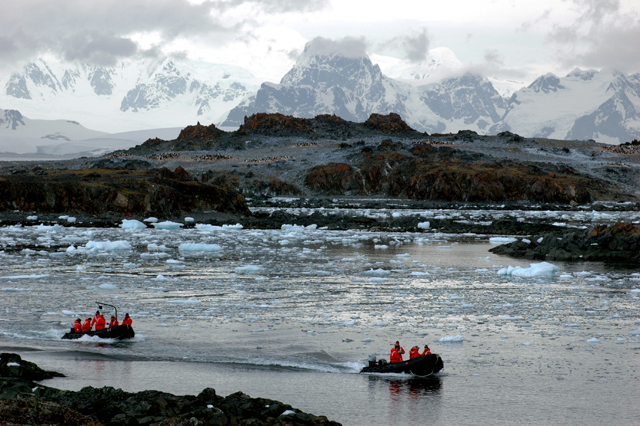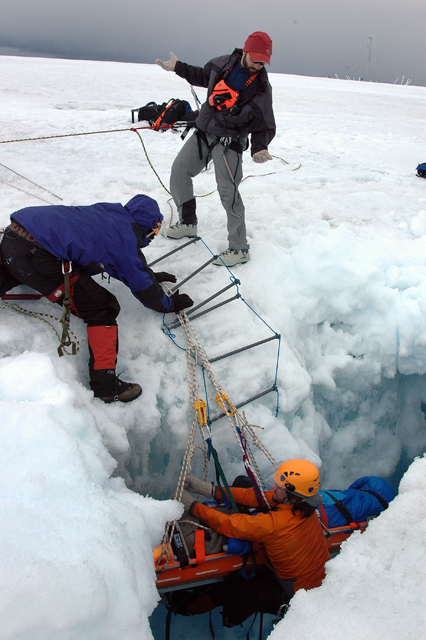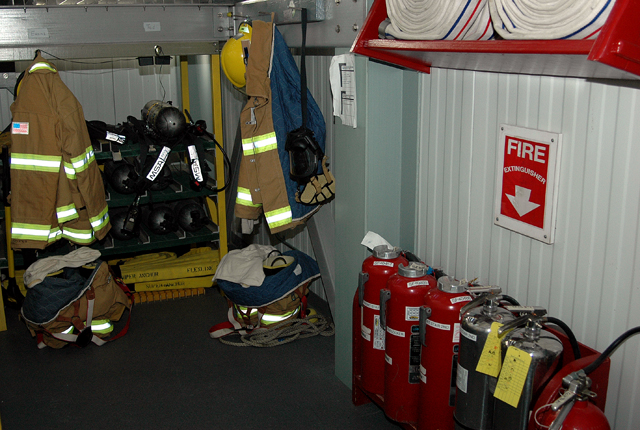|
Page 3/4 - Posted May 21, 2010
For love of the missionIf there’s anything that unites the crew at Palmer Station, it’s their sense of shared mission. “That’s the thing that’s kind of neat about Palmer: You can have direct involvement in science,” says soft-spoken Station Manager Rebecca Shoop, who joined the USAP in 1994 after deciding the 9-to-5, get-the-gold-watch-after-50-years lifestyle wasn’t for her. “I find it hard to imagine sitting in an office for 12 months of the year,” she says. “I like coming down here and doing the job. The planning and all that stuff can be fun and challenging, but when you’re down here, you’re making it all happen. It’s all very direct.” It’s also all very exhausting. Most of the summer crew arrived in September and finally headed to all points north in April. The work schedule is long at nine hours a day, six days a week. But that doesn’t tell the whole story of what is required to work at Palmer Station. There’s no professional fire department. There’s only one doctor. Tour ships come and go for months. The environment can be hazardous, the weather infamously fickle. Almost everyone on stations serves on one or more emergency teams. In addition to the volunteer fire department and trauma team, there are also glacier and ocean search and rescue squads that train every month. For instance, by day, Bob DeValentino is the Peninsula Logistics coordinator, meaning he tracks and moves all the materials that come and go between the station and the rest of the world. But he also serves on the glacier search and rescue team, one of the veteran members who is familiar with ropes, complicated knots and crevasse detection. On one deceptively mild afternoon, he and other members worked a complex rescue scenario on the slushy glacier that hovers behind Palmer Station, pulling a “victim” out of a crack using a backboard and pulley system anchored in the ice. The chill of standing on the ice for hours, with the wind blowing up the glacier off the ocean, can be mind- and body-numbing. On his 10th trip to the Ice in 10 years, DeValentino shrugs off the cold and the creeping exhaustion. “I think it’s great. It breaks up the routine. You miss the point of being here if all you had was your job,” he says. “It helps people take a little more ownership in the station. It keys them into the fact that they are part of a community here, and they do have a responsibility to take care of themselves and the rest of the community.” The lesson is not lost on Dianne Smith, the station’s administration coordinator. Going by the nickname 5-0 (her height), Smith works with everyone at Palmer, from the time they arrive to the days before they leave. It’s a place where everyone stops for a moment to take genuine interest in the welfare of a co-worker, she says, or to take the initiative in the case of an emergency. “Help can be several days away — even weeks during the winter season. You can’t land a plane and get us out of here in six hours, so we need to be self-sufficient,” she says. “We need to be able to take care of ourselves and our place.” The expectations of the community, the extended isolation, can be draining, Shoop notes. “It’s a long season. It’s seven months,” she says. “To me what a big part of my job involves is making sure things are OK with the community and letting people know what’s going on.” Back 1 2 3 4 Next |



For USAP Participants |
For The Public |
For Researchers and EducatorsContact UsNational Science FoundationOffice of Polar Programs Geosciences Directorate 2415 Eisenhower Avenue, Suite W7100 Alexandria, VA 22314 Sign up for the NSF Office of Polar Programs newsletter and events. Feedback Form |





